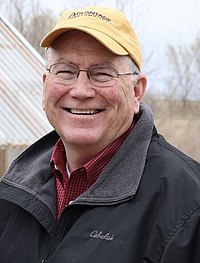| # | Image | Name | Term of service | Political party |
|---|
| 1 |  | N. B. Willey | October 1890 –December 1890 | Republican |
| 2 |  | John S. Gray (acting) | December 1890 –September 12, 1891 | Republican |
| Office vacant: September 12, 1891 –January 2, 1893 |
| 3 |  | F. B. Willis | January 2, 1893 –January 7, 1895 | Republican |
| 4 | | F. J. Mills | January 7, 1895 –January 4, 1897 | Republican |
| 5 | | George F. Moore | January 4, 1897 –January 2, 1899 | Democratic, Populist |
| 6 | | J. H. Hutchinson | January 2, 1899 –January 7, 1901 | Silver Republican, Democratic |
| 7 | | Thomas F. Terrell | January 7, 1901 –January 5, 1903 | Democratic |
| 8 | | James M. Stevens | January 5, 1903 –January 2, 1905 | Republican |
| 9 | | Burpee L. Steeves | January 2, 1905 –January 7, 1907 | Republican |
| 10 | | Ezra A. Burrell | January 7, 1907 –January 4, 1909 | Republican |
| 11 |  | Lewis H. Sweetser | January 4, 1909 –January 6, 1913 | Republican |
| 12 |  | Herman H. Taylor | January 6, 1913 –January 1, 1917 | Republican |
| 13 | | Ernest L. Parker | January 1, 1917 –January 6, 1919 | Democratic |
| 14 |  | Charles C. Moore | January 6, 1919 –January 1, 1923 | Republican |
| 15 |  | H. C. Baldridge | January 1, 1923 –January 3, 1927 | Republican |
| 16 | | O. E. Hailey | January 3, 1927 –January 7, 1929 | Republican |
| 17 | | W. B. Kinne | January 7, 1929 –September 30, 1929 | Republican |
| Office vacant: September 30 –October 25, 1929 |
| 18 | | O. E. Hailey | October 25, 1929 –January 5, 1931 | Republican |
| 19 | | G. P. Mix | January 5, 1931 –January 2, 1933 | Democratic |
| 20 | | George E. Hill | January 2, 1933 –January 7, 1935 | Democratic |
| 21 | | G. P. Mix | January 7, 1935 –January 4, 1937 | Democratic |
| 22 |  | Charles C. Gossett | January 4, 1937 –January 2, 1939 | Democratic |
| 23 |  | Donald S. Whitehead | January 2, 1939 –January 6, 1941 | Republican |
| 24 |  | Charles C. Gossett | January 6, 1941 –January 4, 1943 | Democratic |
| 25 | | Edwin Nelson | January 4, 1943 –January 1, 1945 | Republican |
| 26 |  | Arnold Williams | January 1, 1945 –November 17, 1945 | Democratic |
| Office vacant: November 17, 1945 –March 20, 1946 |
| 27 | | A. R. McCabe | March 20, 1946 –January 6, 1947 | Democratic |
| 28 |  | Donald S. Whitehead | January 6, 1947 –January 1, 1951 | Republican |
| 29 | | Edson H. Deal | January 1, 1951 –January 3, 1955 | Republicans |
| 30 | | J. Berkeley Larsen | January 3, 1955 –January 5, 1959 | Republican |
| 31 | | W. E. Drevlow | January 5, 1959 –January 2, 1967 | Democratic |
| 32 | | Jack M. Murphy | January 2, 1967 –January 6, 1975 | Republican |
| 33 |  | John Evans | January 6, 1975 –January 24, 1977 | Democratic |
| Office vacant: January 24–28, 1977 |
| 34 | | William J. Murphy | January 28, 1977 –January 1, 1979 | Democratic |
| 35 |  | Phil Batt | January 1, 1979 –January 3, 1983 | Republican |
| 36 | | David Leroy | January 3, 1983 –January 5, 1987 | Republican |
| 37 |  | Butch Otter | January 5, 1987 –January 3, 2001 | Republican |
| Office vacant: January 3–30, 2001 |
| 38 | | Jack Riggs | January 30, 2001 –January 6, 2003 | Republican |
| 39 |  | Jim Risch | January 6, 2003 –May 26, 2006 | Republican |
| Office vacant: May 26 – June 15, 2006 |
| 40 | | Mark Ricks | June 15, 2006 –January 1, 2007 | Republican |
| 41 |  | Jim Risch | January 1, 2007 –January 3, 2009 | Republican |
| Office vacant: January 3–6, 2009 |
| 42 |  | Brad Little | January 6, 2009 –January 7, 2019 | Republican |
| 43 |  | Janice McGeachin | January 7, 2019 –January 2, 2023 | Republican |
| 44 |  | Scott Bedke | January 2, 2023 –present | Republican |




















